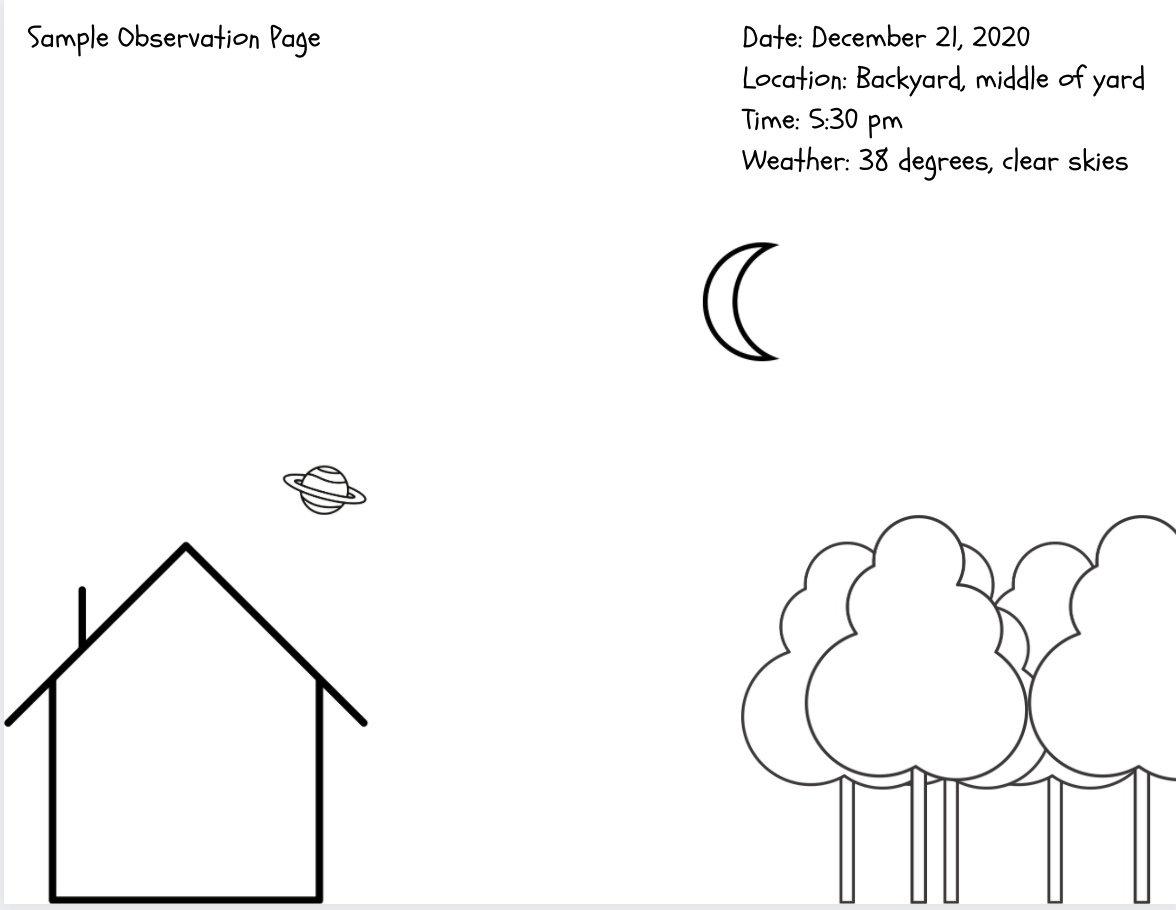Backyard Astronomy
The night sky is full of stars and planets. Astronomers believe that the Milky Way galaxy, which is the home of our solar system, contains over 300 billion stars with their own solar systems! In ancient times, the night sky was used to navigate. Because the Earth is constantly moving, the stars and planets appear to move across the sky.
In this activity, we will observe our solar system's two gas giants, Jupiter and Saturn, align in the night sky! The last time this was observed was by Galileo in 1623.
Learning Objectives/Opportunities
Build basic knowledge about our solar system
Science process skills: observation, recording observations
Developmental Skills: fine motor skills
Directions:
Around 5:30 pm, find an unobstructed view of the sky.
Face the direction of the sunset. Make a quarter turn South.
Look for a bright, non-twinkling spot in the sky.
Observe where the spot falls in relation to other houses, trees, or natural landmarks.
Use your hands to measure the distance between a point of the triangle and the landmark.
Draw your observations.
You should be able to observe it with just your eyes, however, if you have binoculars or a telescope, you will be able to see Jupiter's moons and Saturn's rings.
Sources:
https://www.scientificamerican.com/article/jupiter-and-saturns-great-conjunction-is-the-best-in-800-years-heres-how-to-see-it/
https://solarsystem.nasa.gov/planets/jupiter/overview/
https://solarsystem.nasa.gov/planets/saturn/overview/

